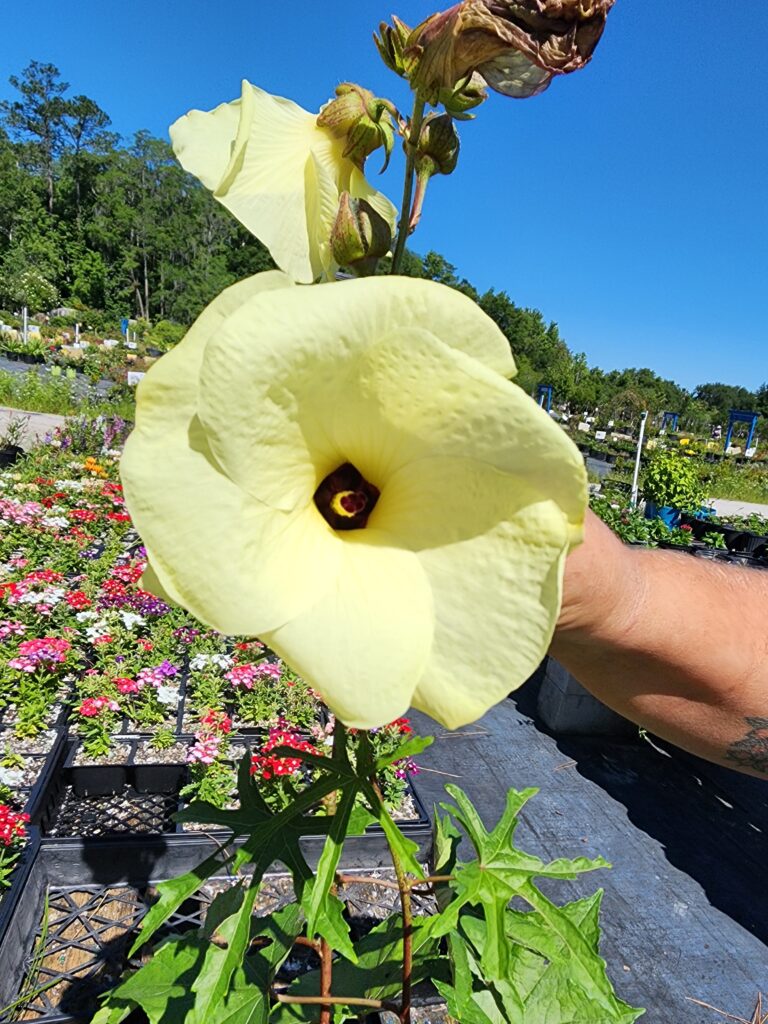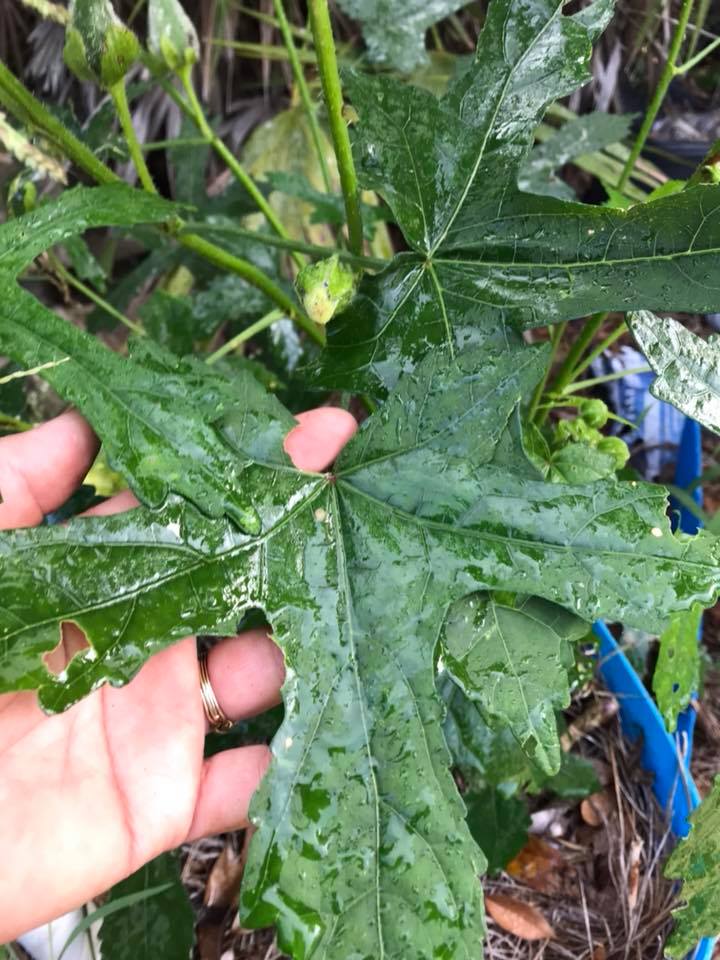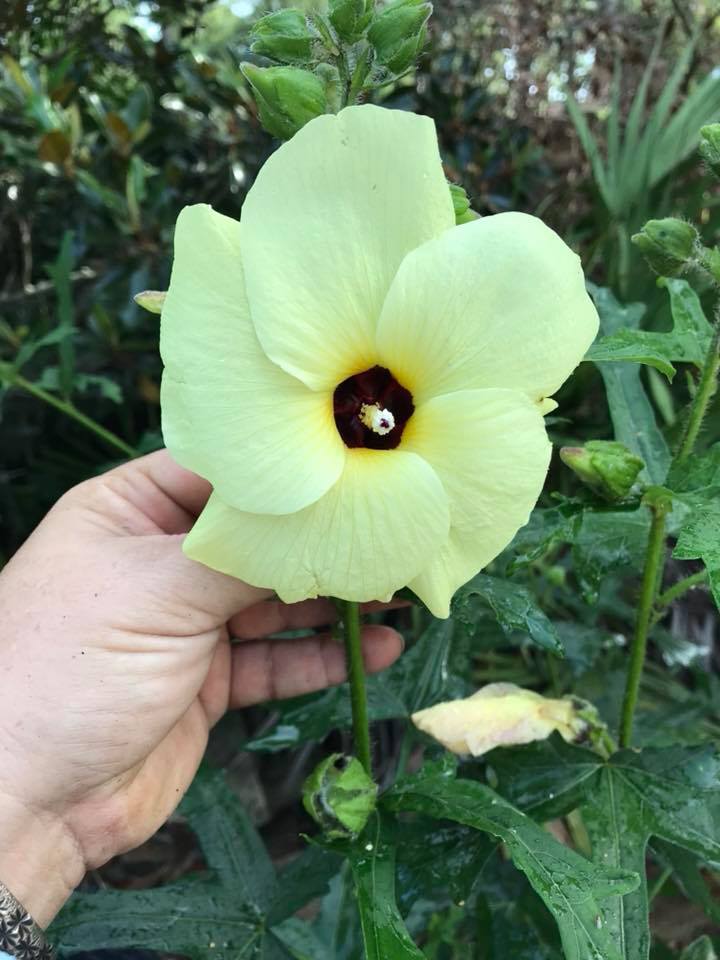Hibiscus / Abelmuschus manihot ‘Sunset’ Akibia / Sunset Muskmallow / Sunset Hibiscus / Hibiscus Manihot
I LOVE THIS PLANT! I grow a few cultivated selections of Abelmoschus that are growing in popularity for Florida’s food forests and edible landscapes across the country. There’s ‘ Kikos Krump’ a big shiny leafed selection perfect for veggie wraps and a beautiful variegated form ‘Auntie Lilli’ and ‘ Chief Kubos Prize’ but somehow I feel like this one gets left out of the hooplah and I really don’t know why. It’s the only one of those that ever has flowered and set seeds reliably for me and the flowers are huge and every bit as beautiful as tropical hibiscus plants! It’s an annual here for us in NE Florida so snack all summer and fall and don’t forget to save those seedpods for next year’s crop!
Origins and Use of Hibiscus Sunset Muskmallow Aibika:

This plant has so many common names because it is grown all over the world for its highly nutritious leaves. It also happens to be one that is a little more difficult to track down in books and literature and has undergone a botanical reclassification and moved from the Genus Hibiscus to the Genus Abelmuschus adding to the confusion of exactly what plant people may be referring to. I still find myself referring to it most commonly as a Hibiscus because well, while you maybe can teach an old dog new tricks, it may be difficult! So I revert back to calling it the name that I learned it under years ago. I’ll try to remember to change it up. 🙂 While people may debate over names, what is not up for debate is the simple fact that this is a fantastic plant! I’m unsure why its popularity has not reached the levels of other of the Manihot cultivars on the market but for me this one has a permanent spot ready for it to be planted each summer in my home garden.
Hibiscus manihot Aibika is native to India South China New Guinea and Queensland. It’s highly nutritious foliage that can be eaten raw or cooked. It is high in vitamin A and C and Iron as has a high percentage of protein ( 12 percent by weight ) that makes it a valuable food source. To compare, most beans run 8-11 grams of protein per 100 grams of weight. And that may be why I love this plant so much!
In both Japan and Korea its mucilage ( like all Okrah family plants it has a bit of slime in that seedpod) is used in traditional forms of paper making.
Sun Exposure for Sunset Muskmallow:
Full sun gets you the best leaf and flower production but I have grown these in locations that receive afternoon shade all summer long with good results as well and they even still bloomed wonderfully.
Height and Growth Habit of Sunset Muskmallow:
In an ideal location these plants can reach to 9 ft height with a 3-4 ft spread In my sandy soil home garden they seem to be happy in the 4-6 ft range, keeping them trimmed not only helps get leaf buds to turn into branches giving me more tasty leaves it also helps avoid storm damage during NE Floridas summer rainstorms.
hese fast growing plants will thankyou for some additional nutrition. Fertilize once a season or amend the soil with compost when planting. A nice thick mulch or leaf layer around the base of the plant will help it hold on to moisture during the hot summer months so it just keeps on growing!

These plants are pretty pest free for me and an easy care addition to the landscape.
Plant seeds in late spring or early summer and once established you can multiply your crop easily by cuttings. For us here in NE Florida these plants will behave as annuals and need replanted yearly.


